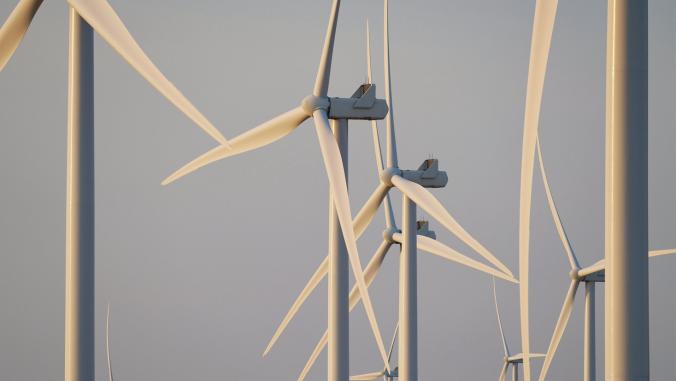EBay's bold new data center efficiency measure
<p>E-commerce giant shares methodology that links specific lines of business to energy consumption and carbon emissions.</p>

In the past, eBay has carved out a clear leadership position when it comes to sustainable, energy-efficient data center design.
Now, the e-commerce giant is raising the bar again with a new metric that allows it to examine far more closely how changes to its technical infrastructure affect business performance, electricity sourcing needs and environmental impact.
EBay's new Digital Service Efficiency methodology specifically measures how many "buy" or "sell" business transactions are completed per kilowatt-hour of electricity. The company likens DSE to the "miles per gallon" measurement that automakers use to talk about the efficiency of new cars.
"We started to work on this three years ago, because we needed to uplevel the conversation," said Dean Nelson, vice president of global foundation services for the company, which is based in San Jose, Calif.
While the current dashboard is specific to the company's own business, eBay has released the methodology to the Green Grid, a nonprofit focused on improving data center efficiency, with the idea that other companies that rely heavily on data centers might fine-tune it for their own operations, he said.
"There are a lot of engineers that want to discuss the dynamics of how this works," said Nelson, who is chairman of Green Grid's technical advisory council.
Nelson says DSE will help eBay better understand how to keep optimizing its technical infrastructure over time to support buyers and sellers who exchange more than $68 billion worth of goods on the site annually.
By changing certain variables, such as the number of servers in its data centers or the number of transactions handled by each, eBay can make a more direct connection between its technology investments and its cost of business, he said.
"With this information, we’re able to see and do things that we simply weren’t equipped for previously," writes Nelson about DSE on the company's blog.
"As an example, by using the DSE dashboard, some of our software engineers saw that by slightly decreasing the memory allocated for an application in a pool of servers, they could remove 400 servers from the pool," continued Nelson. "This insight helped us eliminate nearly a megawatt of power consumption and avoid spending more than $2 million to refresh the servers. This simple software tweak helped us lower power consumption, decrease costs and increase system performance, ultimately increasing our revenue per transaction. And that’s just one example."
EBay's dashboard measures things that are very specific to its own business.
Some of those metrics include the number of physical servers (52,075 at the end of 2012), its total power load (19.43 megawatts) and the total number of active users (112.3 million). The dashboard also tracks how eBay is doing for several best practices measures advocated by Green Grid: power usage effectiveness, water usage effectiveness and carbon usage effectiveness.
While most companies with data centers are familiar with PUE, the other two metrics are less commonly used.
EBay is using quarterly figures for 2012 as its baseline for improvement. "We already have a highly productive engine, but we know it can get more and more efficient," Nelson said.
If you peek at the dashboard, for example, you'll notice that eBay managed 37,936 transactions per kWh at the end of the first quarter of 2012. But by the end of 2012, it had improved the measure to 50,737 transactions per kWh. During those two same timeframes, it managed to keep its metric tonnes of carbon emitted per server in the 0.45 to 0.46 range.
Here are eBay's three goals for the next 12 months, using DSE to help get there.
- Increase transactions per kWh by 10 percent year over year.
- Reduce cost per transaction by 10 percent year over year.
- Reduce carbon per transaction by 10 percent year over year.
Most companies that rely heavily on technology infrastructure to drive their revenue or services measure metrics such as the energy and water those operations consume, along with the carbon dioxide emissions that's associated with them. PUE is a fairly common concept.
Nelson positions DSE as the next potential breakthrough for technology-centric companies. To that end, his team has published a whitepaper describing many of the concepts that went into developing the methodology over the past three years.
"Through sharing the methodology and its results, eBay hopes to stimulate a larger conversation on how measurement can drive the tuning of technical infrastructure for improved business value," Nelson's team notes in the whitepaper.
Although the variables that companies might use for DSE obviously would be different, the methodology behind the metric boils down to these four considerations:
- Determine the top-level digital services that are delivered to customers.
- Quantify the energy consumer for each of those services.
- Establish the appropriate "currencies" that should be used to express the measurements. The "IT currency," for example, would be the number of watts consumed by equipment.
- Figure out which variables matter most for balancing cost, performance and carbon footprint associated with each service.
Green Grid is holding working sessions to debate and refine the DSE formula so that it might be used by other companies much in the way that PUE developed over a five- or six-year period with contributions from many different companies, Nelson said.
"We know this one will be heavily discussed and debated," he said.
Click here to watch Nelson's presentation about DSE at the recent Green Grid technical forum.
Photo of eBay's dashboard provided by eBay





